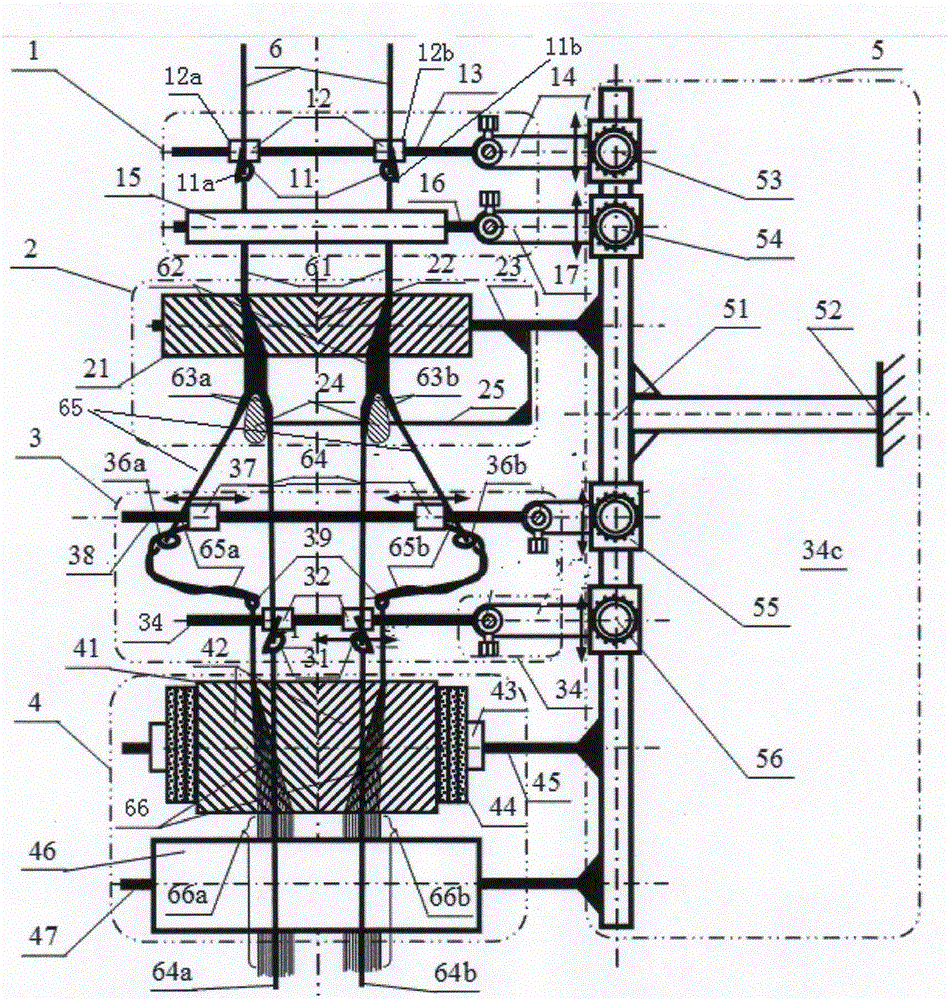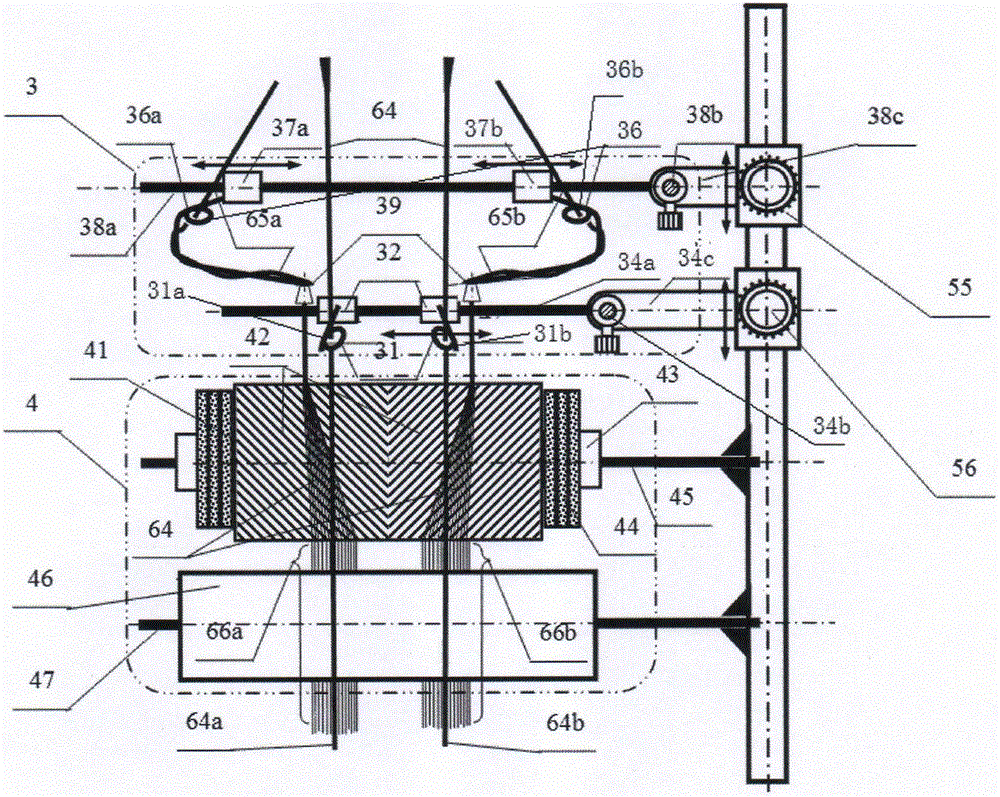Composite filament spreader for respreading and clustering split bundles of two-shafting spread filament, method and applications
A spinning device and spinning technology, applied in the direction of textiles, papermaking, yarn, etc., can solve the problems that are not suitable for short and weak fibers, high branching, poor spinnability, etc.
- Summary
- Abstract
- Description
- Claims
- Application Information
AI Technical Summary
Problems solved by technology
Method used
Image
Examples
Embodiment 1
[0038] Embodiment 1: Spinning recycled cotton / material rubber filament composite yarn
[0039] Using the re-spreading and clustering composite spreader for biaxial spreading and splitting of the present invention, the viscose filament bundle is split and spread into two tows and two wire nets according to the above-mentioned splitting and spreading method , and then twist and combine with two bundles of recycled cotton fiber strands at the nip of the front roller respectively to form a smooth reinforced composite yarn. The specific process parameters are shown in the table below. Since the core / network splitting mass ratio is 1:1, the theoretical occupancy rate of the surface silk screen is 1 / 2 of the compound ratio, that is, 15.255%. The content of the measured surface viscose filament is 13.2%. can be effectively displayed. The spun viscose filament is split into a smooth composite yarn wrapped with noil short fiber strands, and the hairiness index, twist angle, breaking stre...
Embodiment 2
[0040] Embodiment 2: spinning kapok / polyester filament composite yarn
[0041] Using the re-spreading and clustering composite spreader for biaxial spreading and splitting of the present invention, the polyester filament bundle is split and spread into two tows and two wire nets according to the above-mentioned splitting and spreading method, Then twist and combine with two bundles of kapok at the nip of the front roller respectively to form a smooth reinforced composite yarn. The specific process parameters are shown in the table below. Since the core / network splitting mass ratio is 3:7, the theoretical occupancy of the surface silk screen is 7 / 10 of the composite ratio, that is, 22.78%. The measured surface polyester filament content is 21.9%, and the characteristics of kapok fiber can be displayed And it can effectively prevent chipping and reduce hairiness. The spun polyester filament split yarn is a smooth composite yarn wrapped with kapok staple fibers. The hairiness in...
Embodiment 3
[0042] Embodiment 3: Reuse cashmere / silk composite yarn
[0043] Using the re-expanding and clustering composite spreader for two-axis spreading and splitting of the present invention, the silk is split and spread into two tows and two wire nets according to the above-mentioned splitting and spreading method, and then The nip of the roller is respectively twisted and compounded with two bundles of recycled cashmere fiber strands to form a smooth reinforced composite yarn. The specific process parameters are shown in the table below. Since the core / network splitting mass ratio is 9:1, the theoretical occupancy of the surface silk mesh is 1 / 10 of the composite ratio, that is, 1.969%. The measured surface silk content is 0.59%, and the characteristics of cashmere fibers can be fully displayed. , almost no filaments, and can effectively reduce hairiness. The spun silk split yarn is wrapped with cashmere staple fiber and is wrapped with smooth and clean composite yarn. The hairine...
PUM
 Login to View More
Login to View More Abstract
Description
Claims
Application Information
 Login to View More
Login to View More - R&D
- Intellectual Property
- Life Sciences
- Materials
- Tech Scout
- Unparalleled Data Quality
- Higher Quality Content
- 60% Fewer Hallucinations
Browse by: Latest US Patents, China's latest patents, Technical Efficacy Thesaurus, Application Domain, Technology Topic, Popular Technical Reports.
© 2025 PatSnap. All rights reserved.Legal|Privacy policy|Modern Slavery Act Transparency Statement|Sitemap|About US| Contact US: help@patsnap.com



